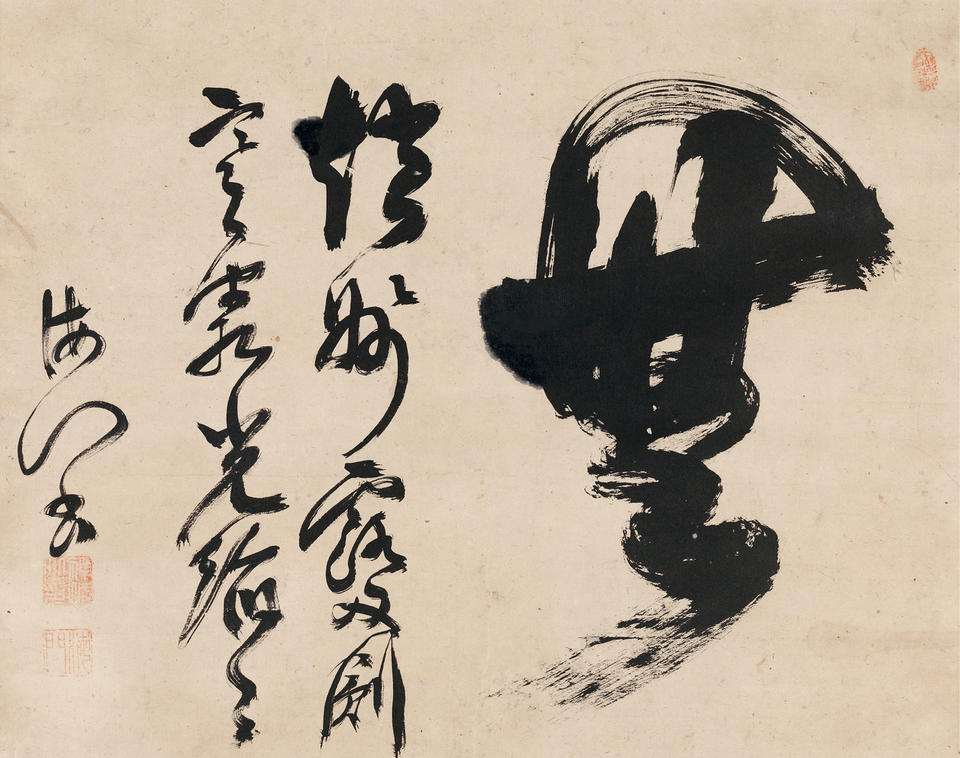Artist
Kaimon
(海門; fl. 18th century)
Catalogue information
Edo period
Hanging scroll; ink on paper
54.6 cm x 121.9 cm (21 1/2 x 48 in.)
See also
This artwork was published as catalogue entry 541 in Volume I of Art through a Lifetime.
Additional details



Text
Monk Zhaozhou’s drawn sword / glistens like chilly frost blazing bright
.
Signature
Written by Kaimon
Seals
[upper right] illegible; [lower left] Zenkaku no in
; Kaimon
Supplementary Transcriptions
Text
無
趙州露刃劍,
寒霜光焰焰。1
Signature
海門書。
Seals
1 illegible oval seal
禪恪之印(白文方印) (intaglio, square)
海門(朱文方印) (relief, square)
Notes
1. Zhaozhou 趙州 refers to the distinguished Chinese Zen master Congshen從諗. In 857 at the age of eighty, he went to Zhaozhou (modern Zhaoxian, Hebei Province, China) to preach Buddhism and became widely revered. His decades-long career there won him the honorific title of “Master Zhaozhou.” This couplet is taken from Master Fayan’s (法演,1024-1104) poetic comment on Congshen’s statement that dogs have no Buddha nature. See Chapter 6 on Master Congshen in Huiweng Wuming 晦翁悟明, comp., Liandeng huiyao 聯燈會要 (Essentials in the Transmission of the Lamp, Wuming’s preface dated 1183) in卍 Xuzangjing 新纂續藏經, vol. 79, no. 1557, CBETA Chinese Electronic Tripitaka V1.23, Normalized Version, http://www.cbeta.org/result/X79/X79n1557.htm. According to Monk Touzi (投子大同,819-914), a “drawn sword” is an instrument that “kills everyone and gives life to everyone殺一切人,活一切人.” See Touzi Heshang yulu 投子和尚語錄 (Collected Words of Monk Touzi) in Chapter 36 of Gu zunsu yulu 古尊宿語錄 (Collected Words of Past Distinguished Buddhist Monks, 13th c.) in卍 Xuzangjing 新纂續藏經, vol. 68, no. 1315, CBETA Chinese Electronic Tripitaka V1.23, Normalized Version, http://www.cbeta.org/result/normal/X68/1315_036.htm

